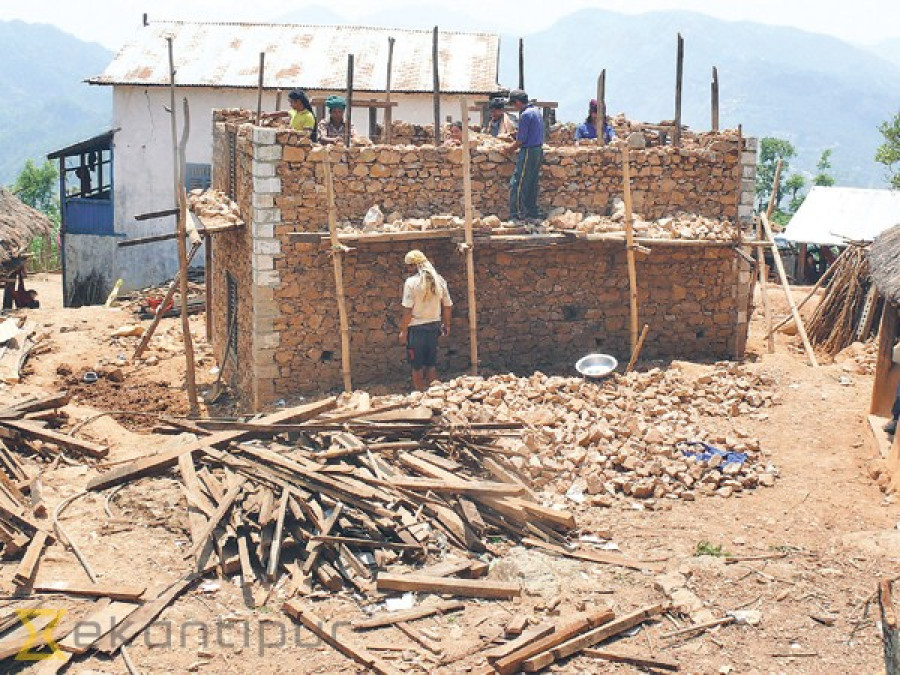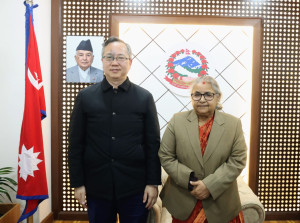National
Labour shortage hits reconstruction works
Post-earthquake reconstruction has been paralysed by a shortage of labourers despite a slump in labour migration for foreign employment, stakeholders have observed.
Post-earthquake reconstruction has been paralysed by a shortage of labourers despite a slump in labour migration for foreign employment, stakeholders have observed.
Presenting the findings of a research titled ‘Migration and Labour Dynamics in Post Disaster Nepal’, labour and migration expert Ganesh Gurung on Thursday said the monthly departures for foreign jobs stood at around 50,000 persons before earthquake, which plummeted to below 40,000 after the disaster.
Gurung, however, argued that the earthquake was not only reason for the decline in the number of people seeking jobs abroad.
“Some people, suffering physical and property losses, might have stayed back home following the earthquake.
But there were other factors like a diminishing demand [for workers] from companies in the Gulf countries and banning of housemaids leaving for the countries,” Gurung pointed out.
Posh Raj Pandey, chairman of the South Asia Watch on Trade, Economics and Environment, said the shortage of reconstruction workers exposes a vast labour market gap in the country.
“The scarcity is caused largely by migrant departures. At the same time, it also shows that the government’s stress should be on improving the country’s labour market,” said Pandey.
“Remittance can emerge as a resource for reconstruction financing but then it can only be taken as a means to sustain in the short-run.”
An estimated 1.2 million workers are required for post-quake reconstruction.
According to the Ministry of Home Affairs, the devastating earthquakes fully destroyed more than 600,000 buildings, besides partially damaging 280,000 others in the country. However, the reconstruction process has frustratingly slow.
Shortage of labour for reconstruction was somehow unexpected since the number of aspiring migrant workers has also gone down. This situation, Gurung says, arises largely from people’s tendency to work abroad but not to take up jobs here even if the wages are good.
On the other hand, hiring of local labourers by development projects like road and hydropower construction has aggravated the situation, said Gurung. He reported an increase in daily wages from Rs500 to Rs800 in rural areas post-earthquake.
Workers from mid-western and far-western regions are reported to be working in the 14 districts severely affected by the earthquakes.
“The earthquake has also diverted migration from Nepal’s mid- and far-western Hills to the earthquake affected districts, which is a good sign. Earlier, these people used to go to India,” Gurung observed.
Stakeholders believe this is a right time to curb migrant outflow.
According a study conducted by New Era, a non-governmental research organisation, Nepal will face an acute labour shortage by 2020 if the high trend of youths leaving the country remains.
The government needs to come up with lucrative packages such as one-year minimum job guarantee, training for workers, insurance and extra incentives at the end of the contract period to attract workers to reconstruction works, stakeholders say.




 9.12°C Kathmandu
9.12°C Kathmandu














